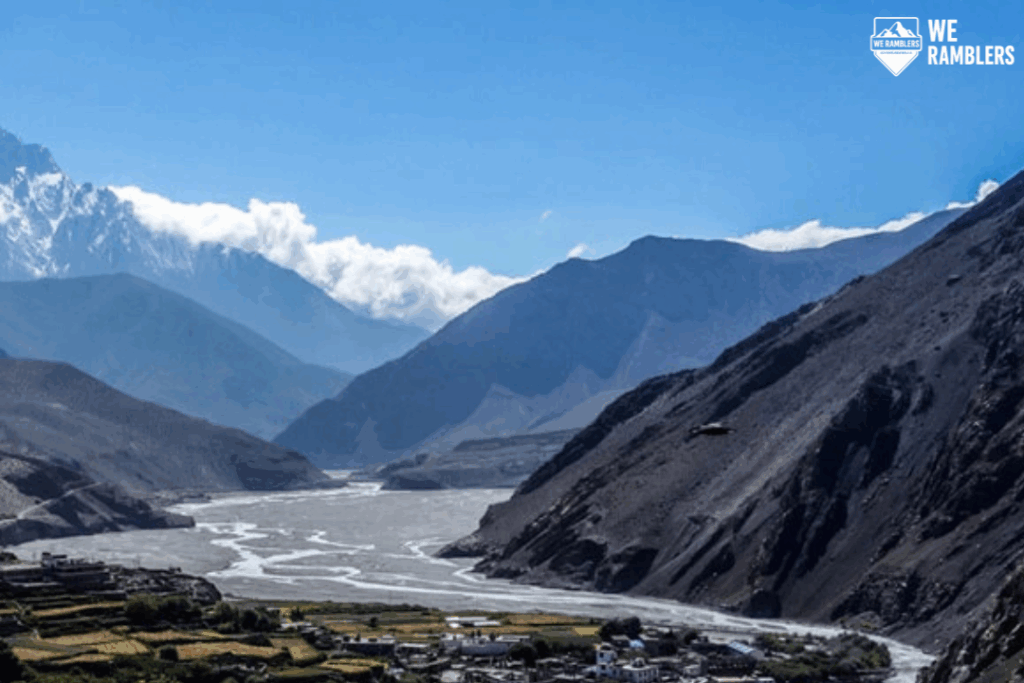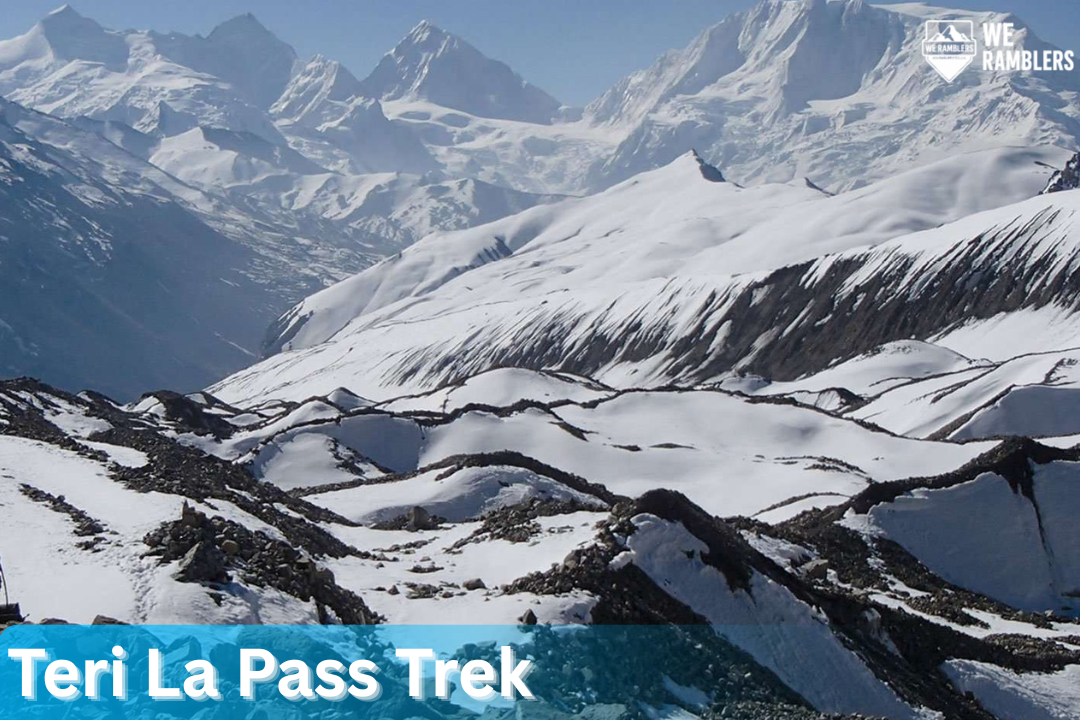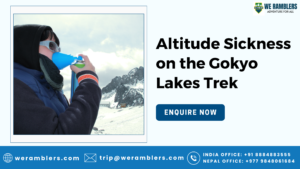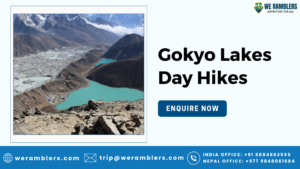Teri La Pass Trek: The Ultimate Remote Himalayan Adventure in Upper Mustang
Far beyond the familiar trails of Nepal, where civilization fades into barren ridgelines and endless sky, stands Teri La Pass at 5,595 meters. This secluded high-altitude gateway, untouched by mass tourism, draws only the most committed adventurers—those who crave the purity of true wilderness and the silent challenge of the remote Himalayas.
The Teri La Pass trek traverses some of the most untouched regions, connecting the ancient Nar Phu Valley with the timeless landscapes of Upper Mustang trekking routes. Jagged cliffs, ancient sky caves, vibrant monasteries, and wide desolate valleys define this journey. It’s an adventure that appeals to seasoned Himalayan explorers, high-altitude specialists, and those who crave authentic, remote Himalayan trek experiences far away from crowded trails.
For those with the skills, fitness, and determination, Teri La offers an unparalleled chance to step into a world shaped by ancient trade, spiritual devotion, and raw Himalayan power.
Why Choose the Teri La Pass Trek?
What sets the Teri La Pass trek apart is its sheer isolation, making it one of the ultimate offbeat treks in Nepal. Trekking through this region means crossing paths with few others while experiencing a pristine wilderness dominated by towering peaks like Himlung, Kang Guru, and the Damodar Himal. The unspoiled landscapes and cultural immersion make every step deeply rewarding.
The trek’s remote nature demands a full expedition-style approach, requiring careful coordination of permits, mule caravans, camp crews, and high-altitude gear. This is a Nepal restricted area trek that demands preparation and expertise, but it rewards trekkers with unparalleled serenity and natural grandeur.
Additionally, traversing the mystical Nar Phu to Upper Mustang route allows you to explore ancient Tibetan Buddhist settlements, centuries-old monasteries, and untouched cultural traditions preserved in the shadow of the Himalayas. This journey is perfect for explorers yearning for an uncompromising adventure into Nepal’s hidden sanctuaries.
Geographic & Strategic Significance
Positioned near Nepal’s northern frontier with Tibet, Teri La Pass serves as a crucial link between two culturally distinct restricted zones: Nar Phu Valley and Upper Mustang trekking region. This strategic corridor has historically served as a trade and pilgrimage route, connecting remote Himalayan communities separated by formidable mountain barriers.
Set within the desolate beauty of the Damodar Himal, trekkers will witness a stark yet mesmerizing landscape defined by glacial valleys, eroded canyons, and towering peaks like Himlung (7,126m), Saribung (6,346m), and the surrounding Annapurna massif. The hidden pass in Nepal remains shielded from modern influences, preserving a raw, untamed wilderness rarely seen even by veteran trekkers.
Few treks in Nepal offer such an intimate encounter with the trans-Himalayan ecosystem. Here, every step is a geographical marvel—crossing sedimented plateaus, frozen rivers, and alpine deserts that narrate the ongoing geological drama of the Himalayas.
Best Time to Trek Teri La Pass
Timing your Teri La Pass trek is essential for both safety and enjoyment. The best time to trek Teri La Pass is in the pre-monsoon window of April–May and the post-monsoon season of September to mid-November. These periods offer stable weather, clearer skies, and manageable snow conditions on the pass itself.
Due to Mustang’s rain-shadow location, the area sees significantly less monsoon rain compared to other regions in Nepal. However, heavy snow accumulation can still pose challenges in early spring, while late autumn treks run the risk of early snowfall. Winter conditions are especially brutal, often rendering the technical trek Nepal route impassable with deep snow and sub-zero temperatures.
Successfully planning your trek within these optimal windows ensures safer passage over exposed scree slopes, glaciers, and high camps, allowing you to fully absorb the spiritual and physical grandeur of this extraordinary expedition.
Teri La Pass Trek Itinerary
Here’s a carefully designed Teri La Pass itinerary incorporating essential acclimatization and cultural exploration:
- Day 1–2: Drive from Kathmandu to Koto (via Besisahar), crossing scenic mountain highways and terraced valleys.
- Day 3–5: Trek Koto → Meta → Kyang, gradually ascending through rhododendron forests and wild canyons.
- Day 6–7: Trek to Phu village, followed by a rest and acclimatization day exploring ancient monasteries and Himalayan vistas.
- Day 8–9: Phu → Nar Phedi → Nar, passing through traditional stone hamlets and vibrant prayer-flag-draped ridges.
- Day 10: Acclimatization day in Nar, offering a chance to visit Tashi Lhakhang Monastery and engage with local Tibetan communities.
- Day 11–13: Nar → Labse Khola → High Camp, traversing alpine pastures, yak herder shelters, and increasingly barren terrain.
- Day 14: Cross Teri La Pass (5,595m) → Yak Kharka, a long but breathtaking day traversing snowfields and glacier crossings.
- Day 15–17: Descend through Tangge and Yara villages, witnessing ancient cliff dwellings and ochre-red canyons.
- Day 18–20: Reach Lo Manthang, explore the walled city, royal palace, and sky caves of Upper Mustang.
- Day 21–22: Drive or trek to Jomsom and fly to Pokhara.
This extended route allows for proper acclimatization while maximizing the cultural and scenic richness of the remote Himalayan trek.
Permits and Regulations
The Teri La Pass trek requires navigating Nepal’s strict trekking regulations for Nepal restricted area trek zones. Two major permits are mandatory:
- Nar Phu Restricted Area Permit: $100/week (Sept–Nov), $75/week (Dec–Aug)
- Upper Mustang Permit: $500 for 10 days, $50 for each extra day
- ACAP (Annapurna Conservation Area Permit): ~$30
Solo trekking is prohibited. Only government-registered trekking agencies can obtain these permits, ensuring proper safety protocols are followed. Additionally, trekkers may be subject to random permit inspections at multiple checkpoints.
Strict permit regulations not only preserve fragile ecosystems and cultural heritage but also ensure that only adequately prepared trekkers venture into these delicate Himalayan sanctuaries.

Teri La Trek Difficulty and Terrain
The Teri La trek difficulty ranks among the most challenging in the Himalayas. This is a technical trek Nepal adventure requiring more than stamina — it demands experience, skill, and adaptability. Trekkers face:
- Prolonged high-altitude exposure
- Steep scree ascents and descents
- Glacier crossings that may require rope and crampon use
- Unpredictable weather with strong winds and snowfall
The lack of teahouses means this is a fully camping-based journey. Mules and porters carry supplies, but trekkers must be self-sufficient and mentally prepared for isolation. Previous Nepal alpine trekking or mountaineering experience is highly recommended, particularly for navigating exposed ridges and glacier zones near the pass.
This trek tests both your physical capabilities and your wilderness resilience.
Acclimatization and Altitude Concerns
Proper acclimatization is critical for survival and success on the Teri La Pass trek. Spending multiple nights above 4,000 meters exposes trekkers to high risk of Acute Mountain Sickness (AMS), even for the most seasoned hikers.
Key acclimatization strategies include:
- Gradual ascent profiles with built-in rest days
- Pre-acclimatization hikes before beginning the main trek
- Staying hydrated (4–5 liters daily) and avoiding alcohol
- Recognizing AMS symptoms early — headache, dizziness, nausea
- Having emergency protocols and portable oxygen available
Spending nights in Phu, Nar, and High Camp allows the body to adjust to the oxygen-thin air before attempting the nearly 5,600m high altitude trekking Nepal summit push.
AMS can be life-threatening — caution, awareness, and preparation are your strongest allies.
Essential Packing List for Teri La
The extreme remoteness of the Teri La Pass trek demands a specialized packing list. Forget minimalism—this is an expedition where being over-prepared can save your life.
- 4-season tent and sleeping bag rated to -20°C
- Down jacket, multiple thermal layers, windproof shell
- Glacier gear: crampons, mountaineering boots, harness (if crossing crevassed zones)
- Trekking poles, ice axe (optional but recommended)
- Portable GPS, maps, and compass
- Solar charger or multiple power banks
- Satellite phone or Garmin InReach device
- High-calorie expedition food and personal water filter
- Comprehensive first-aid kit with altitude meds and trauma supplies
Unlike standard trekking routes, resupply is not an option. Everything you need must be carried in — and out — reinforcing the expedition-style nature of this remote Himalayan trek.
Cultural Highlights on the Route
The cultural richness of the Teri La Pass trek is as powerful as its natural beauty. Trekking through Nar and Phu offers a glimpse into authentic Tibetan Buddhist life, with ancient stone houses, fluttering prayer flags, spinning mani wheels, and sacred gompas nestled into rocky cliffs.
Beyond the pass, Upper Mustang trekking unveils the medieval walled city of Lo Manthang, home to royalty, ancient monasteries, and hidden sky caves of Chhoser once inhabited by monks, shamans, and hermits. Ritual ceremonies, Bon practices, and Buddhist festivals infuse the journey with profound spiritual energy.
For lovers of Himalayan spirituality, this trek offers one of Nepal’s most unforgettable spiritual experiences.
Trail Combinations and Extensions
For the truly ambitious, the Teri La Pass trek can be expanded into a grand Himalayan expedition. Several thrilling extensions include:
- Visiting Damodar Kunda, sacred alpine lakes revered by Hindus and Buddhists.
- Continuing north beyond Lo Manthang toward the Tibetan border for rare high-altitude crossings.
- Combining with Tilicho Lake or crossing Saribung Pass for the ultimate high altitude trekking Nepal circuit.
- Designing multi-pass circuits that connect Manang, Nar Phu, Teri La, Upper Mustang, and Jomsom into one continuous, epic journey.
These extensions allow for unparalleled flexibility, enabling serious adventurers to customize an expedition perfectly suited for Himalayan exploration.
Final Thoughts and Who This Trek is For
The Teri La Pass trek is an elite-level expedition that demands full respect for the Himalayas. This is a journey for advanced trekkers, mountaineers, and wilderness explorers who possess not only technical skills but also the mental fortitude to face nature’s extremes head-on.
Its raw beauty, isolation, and spiritual depth make it one of the most rewarding Upper Mustang trekking routes. Every hour on this trail strips away modern distractions, reconnecting you to pure adventure, nature, and the living history of Nepal’s high Himalayas.
If you crave a rare, challenging, and utterly authentic remote Himalayan trek, then Teri La Pass stands waiting — silent, wild, and unforgettable.
Trek Teri La Pass with We Ramblers
For those ready to take on the extreme challenge of the Teri La Pass trek, We Ramblers offers expertly guided expedition packages. With experienced high-altitude guides, complete logistical support, and proper safety protocols, we ensure your journey through this remote Himalayan terrain is both safe and unforgettable. Our personalized approach makes even the most demanding treks accessible to serious adventure seekers. Get in touch with us to get full trek details.





